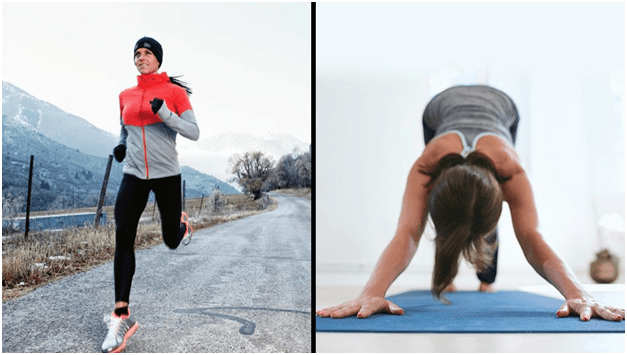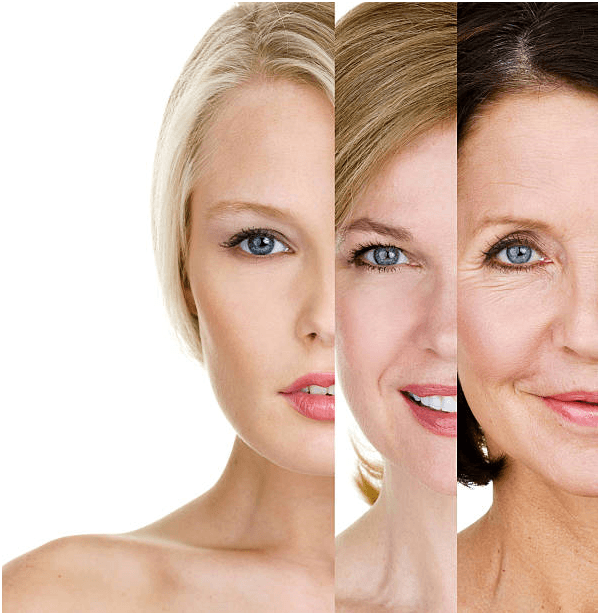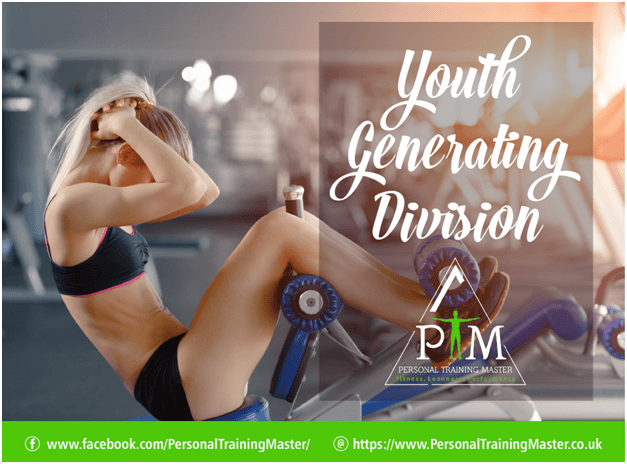What strategies women use how to radiate vitality, stay healthy and look younger?
Every woman wants to feel good in her own skin as she ages.
Ageing as it is set out now is not actually ‘normal’ and is a much accelerated process as compared with what it should be.
The ageing process can be reversed to a major extent with customised lifestyle changes, i.e. diet and exercise, and also, a shift in attitude, to see the positive in life.
You can look and feel great on the inside and the outside, at any stage of life, and any age!
After all, isn’t that what health is about?
We want to feel connected to those we love most.
We desire to have connected emotional resilience required to cope with life’s challenges.
But, how can you maintain a positive attitude that helps us feel grateful and enjoy living?
Well,
To do this, we need healthy bodies, minds, and spirits and it’s the union of these factors which matter.
Women who are most successful in achieving their health goals have cultivated the habit of recording three variables each day:
- good sleep,
- regular exercise and
- Healthy food.
Having a specific strategy is key for motivation.
To fulfil these goals, as an elite personal trainer in London, I recommend guided step-by-step regular exercise approach that will make you healthy.
This will increase strength and flexibility in balance, maximise your energy levels, give you control, focus and empower you to make many positive changes in your life.
As a result of this you can become a positive snow ball – your health and the health of your family and community all benefit.
Click here for a FREE CONSULTATION today!
The most common health issues that affect ageing women
Normal ageing in women comprises physiological changes and some natural declines that may lead to a loss of functional capacity and reserve.
For ageing women, menopause is the most important transition from both biological and social sides.
While women have a better chance to survive into older age, findings revealed that they have more disability than men as well as more co-morbidities.
Some of them are as follows:
Hypertension:Can regular exercise help me to lower my increased blood pressure?
Millions of women have high blood pressure and we all know that it is associated with heart disease, kidney problems, and strokes.
There are good and proven medications to help control your blood pressure.
In addition to taking medications, regular and supervised exercises can improve your blood pressure.
Studies have shown that regular physical activity is just as important as taking the other medications you have been prescribed for your blood pressure control:
- Reaching the full dose of prescribed exercise will help reduce the risk for stroke by 27%[1].
- Some women find that taking their prescribed exercise at full dose reduces the number of medications they need.
However, you should never stop taking your blood pressure medications without talking to your doctor first.
- Regular and prescribed safe physical exercise will help you to lose weight.
Losing just 10% of your starting weight will lead to a 5 mm Hg decrease in your systolic blood pressure (that’s the first number in the blood pressure).

Did you know that for every 5% to 10% of additional weight lost, you’ll see another meaningful decrease in your blood pressure[1]?
Diabetes: How to reduce my increased blood sugar levels?
Customised physical activity has a key role to play in both preventing and treating blood sugar problems especially if you have diabetes type 2.
In fact, the right physical exercises can help prevent diabetes-related problems with your nerves and kidneys[2].
These benefits already start the moment you walk out of the door and continue to grow as you work up to the fully prescribed exercise dose of 150 minutes total per week.
In addition,
You can make your blood sugar normal by losing 10% of your body weight[2].
In other words, weight loss in combination with regular and prescribed exercise can markedly improve your increased blood sugar levels.
Let’s say that you have been enjoying customised exercises for at least 3-4 months.
Therefore, it is the time to ask your doctor to recheck the levels of your glycated haemoglobin Hb A1c (golden standard of a diabetes test) to see how much your blood sugar level improved.
Some women will find that performing prescribed exercises at full dose reduces the number of medications they need[2].
NEVER stop taking your medication(s) without talking to your doctor first about this!
Click here for a FREE CONSULTATION today!
Bones, joints and muscle disorders: How to rehabilitate them?
If you have vitamin D deficiency, osteoarthritis, osteoporosis, chronic injuries and muscle spasms or had a joint replacement, then the next section is the right one for you.
Does exercise make osteoarthritis worse?
About one-fourth of all people over age 55 have pain in their knees on most days and most of these people have osteoarthritis.
Although not the same for everyone, osteoarthritis tends to be more severe as we age.
Osteoarthritis results from wear and tear on the joint, and is the most common cause of joint pain in elderly.
Many women with joint aches or pains avoid exercising and because of this, moving becomes even harder and at even lower levels of activity.
However,
The lack of exercise makes joints stiffer and the surrounding muscles weaker. This leads to the vicious cycle of being even less active.
Understand and believe – you can break this cycle!!!
Gradually becoming more active using the safe type of guided exercises can reverse this.
And,
It will improve your muscle flexibility, joints mobility, and actually help to decrease your pain and stiffness.
Bones and muscles rely on each other and both require regular use, especially when joints ache and hurt.
Safe exercise and customised nutrition prescribed by an elite personal trainer in London can decrease inflammation, joint swelling, pain and improve the function of bones, muscles and joints.
The key is to gradually start with safe exercise using a training programme which has been designed for you.
Click here for a FREE CONSULTATION today!

Fairly soon you will start enjoying the benefits of being able to do, – just about everything!
In addition,
When you lose weight, you lighten the work of your knees and hips. Weight loss enhances the benefits of regular prescribed exercises[3].
What about osteoporosis? Is regular walking really that good?
Osteoporosis, a loss of bone, is a serious concern for women especially as they age.
Regular walking and a healthy diet improve the health of bones and muscles throughout life.
Walking prevents bone loss because it encourages bone formation, stronger muscles. and better balance.
These benefits reduce the chance of falling and breaking a bone.
Bones, especially those of women, require movement and holding weight to be strong. In fact, sitting is the worst thing we do for our bones.
Therefore, a regular habit of light physical exercise(e.g. Simple walking) is important to decrease the bone loss that happens in everyone with ageing [4].
However,
Be aware that increased bone density through exercise is site-specific so, in order to reverse osteoporosis you will require a bit more than, just walking.
To be precise, when you run, the bone growth will occur primarily in your legs and when you play tennis, it more occurs in your dominant arm [5].
One study that examined 61 pre-menopausal women showed that daily hopping exercises increases femoral neck bone mineral density after 6 months [6].
My old injury causes aches, pains and prevents me to regularly exercise.
What shall I do?
In one way or another you can still move. You will find that prescribed physical activity and charting your progress will prove that bothersome aches and pains can improve.
The key is to use personalised exercise that provide the most exertion without suffering from pain.
As an elite personal trainer in London specialised in injury rehabilitation I will provide you with a free comprehensive assessment and find what exercises will be suitable for you.
If you don’t have injuries weight training could be one the best solution for you.
No matter the problem with your bones or joints, it can improve using resistance and weight training.
An excellent way for a woman with hip or knee pain to aerobically condition at a high level is with weights.
If you don’t have any injuries I might recommend focused body weight exercises or weight training with lighter weights and high repetitions without resting between sets [7].
How to improve fast your mood, mental well-being, and coping issues
When mental well-being is at risk, learning how to keep yourself motivated and active is one of the biggest gifts you can give yourself.
Click here for a FREE CONSULTATION today!
Knowing the following facts will help you see you are not alone:
- Between the ages of 15 to 55, women are much more likely than men to find that their moods shift with the seasons. You may hear this referred to as seasonal affective disorder[8].
- While each woman’s experience is her own, mood swings are common throughout our lives. Menstrual cycles, pregnancy, the postpartum period, and menopause each have a distinct influence on a woman’s mood.
- Women are twice more likely to experience depression compared with a man. Forty percent of women will have a depressive episode at some point in their life[9].
- Grief, loss, and worries about your children and families weigh you down
Evidence shows that prescribed programmes may improve your anxiety and depression. Your mood, self-esteem, and stress level all get better with regular exercise.
Women who regularly exercise are almost half as likely to develop depression.Long-term regular exercise also lowers anxiety [8, 9].
I recommend you to connect with others who regularly train.
It is essential for getting started and a motivating crowd will help you staying committed to reach the full dose of your daily exercise.
Finding a partner or walking group or taking your dog with you can often improve your chances of getting started and keeping going.
Regular exercise is a vital prescription across all ages for women. It gets you outside in the sunlight and among people, and helps you learn to lead with your heart with a smile on your face and find the wind at your back.
Ageing women and her skin
Yes, your skin may look younger with regular exercise
Regular exercise help nourish skin and keep skin cells vital, by improving blood circulation.
Blood carries oxygen and nutrients to working cells throughout the body, including also the skin.
Additionally to providing oxygen, blood flow carries away waste products, including free radicals.
Exercise has also been shown to ease stress and may relieve symptoms of stress related conditions such as acne and eczema[10].
Regular exercise helps tone muscles.

Firmer muscles help you look younger and better overall[10].
Click here for a FREE CONSULTATION today!
Reference:
- Mann JFE, Bakris GL. Patient education: High blood pressure in adults (Beyond the Basics). In: Kunins L, ed. UpToDate. Waltham, Mass.: UpToDate, April 2019. https://www.uptodate.com/contents/high-blood-pressure-in-adults-beyond-the-basics
- McCulloch DK. Effects of exercise in adults with diabetes mellitus. In: Mulder JE, ed. UpToDate. Waltham, Mass.: UpToDate, April 2019.https://www.uptodate.com/contents/effects-of-exercise-in-adults-with-diabetes-mellitus
- Pescatello, L., Arena, R., Riebe, D., & Thompson, P. (2013). General Principles of Exercise Prescription. In ACSM’s Guidelines for Exercise Testing and Prescription (9th ed., pp. 166-177). Philadelphia: Wolters Kluwer Health/Lippincott Williams & Wilkins.http://exerciseismedicine.org/assets/page_documents/EIM%20Rx%20series_Exercising%20with%20Osteoarthritis.pdf
- Rosen HN, Drezner MK. Overview of the management of osteoporosis in postmenopausal women. In: Mulder JE, ed. UpToDate. Waltham, Mass.: UpToDate, April 2019.https://www.uptodate.com/contents/overview-of-the-management-of-osteoporosis-in-postmenopausal-women
- Berkeley Wellness (2012). New tricks for old bones. Updated 2017. Retrieved from http://www.berkeleywellness.com/fitness/exercise/article/new-tricks-old-bones
- Bailey CA, Brooke-Wavell K. Optimum frequency of exercise for bone health:randomised controlled trial of a high-impact unilateral intervention. 2010;46(4):1043-9.https://www.ncbi.nlm.nih.gov/pubmed/20004758
- Sullivan J, Feigenbaum J, Baraki A. Strength training for health in adults: Terminology, principles, benefits, and risks. In: O’Connor FG, ed. UpToDate. Waltham, Mass.: UpToDate, April 2019.https://www.uptodate.com/contents/strength-training-for-health-in-adults-terminology-principles-benefits-and-risks
- Hearing CM, Chang WC, Szuhany KL, Deckersbach T, Nierenberg AA, Sylvia LG. Physical Exercise for Treatment of Mood Disorders: A Critical Review. CurrBehavNeurosci Rep. 2016;3(4):350–359. https://www.ncbi.nlm.nih.gov/pmc/articles/PMC5423723/
- Simon G. Patient education: Depression treatment options for adults (Beyond the Basics). In: Solomon D, ed. UpToDate. Waltham, Mass.: UpToDate, April 2019.https://www.uptodate.com/contents/depression-treatment-options-for-adults-beyond-the-basics
- Jaret P (2011). Exercise for Healthy Skin. Retrieved from https://www.webmd.com/skin-problems-and-treatments/acne/features/exercise#1



